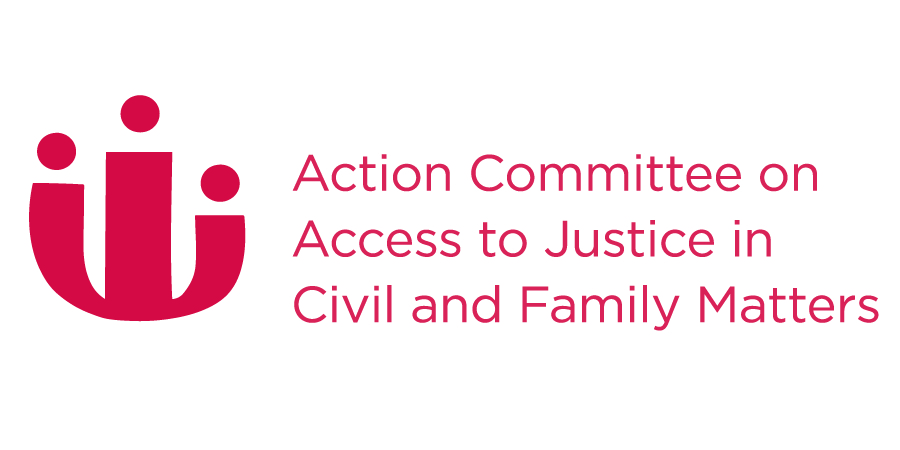Reaching Equal Justice: An Invitation to Envision and Act
Melina BuckleyThursday, September 19, 2013
The post was originally published on the Oxford Human Rights Hub blog.
The year is 2030 and all people living in Canada have equal access to justice regardless of means, capacity or social situation. The justice system is designed around people’s needs taking into consideration differences in the legal needs of different individuals and groups and providing timely and personalized assistance, responding holistically to the legal and non-legal dimensions of problems and ensuring meaningful and effective assistance to navigate a range of paths to justice to achieve lasting and just outcomes. People are empowered to manage their own legal matters with an emphasis on prevention where feasible and to participate in overseeing the justice system as a result they feel a strong connection to it and as a result there is a strong sense of public ownership. Practices are evidence-based and the justice system is a nurturing environment for innovation and consists of learning organizations committed to continual improvement.
This ‘ambitious but possible’ vision of equal justice is at the heart of the Canadian Bar Association’s Access to Justice Committee’s recent report, Reaching Equal Justice: An Invitation to Envision and Act. The Committee starts from the premise that 100% access is the only defensible goal while recognizing the current abysmal situation, which in fact reinforces rather than mitigates inequalities. Rejecting piecemeal reform, the report sets out 31 concrete targets organized around six major themes. Three themes delineate the substance of reform (facilitating everyday justice, transforming formal justice, reinventing the delivery of legal services) and three set out the required support structure (building public engagement and participation, building collaboration and effective leadership and building the capacity for innovation. While the targets are framed as long-term goals to be achieved by 2020, 2025 or 2030, the report also contains a range of indicative actions to be initiated today and interim goals to serve as markers of progress in achieving the targets.
The targets include:
By 2020:
- Individual and systemic legal health checks are a routine feature of the justice system.
- Each provincial and territorial government has established effective triage systems guiding people along the appropriate paths to justice.
- National benchmarks for legal aid coverage, eligibility and quality of legal services are in place with a commitment and plan for their progressive realization across Canada.
- Effective, ongoing collaborative structures with effective leadership are well-established at the national, provincial, territorial and local levels, including through the appointment of access to justice commissioners.
- The first annual access to justice metrics report is released; by 2030, this report is comprehensive.
By 2025:
- Courts are re-centred within the civil justice system and resourced to provide tailored public dispute resolution services with effective internal and external triage and referral processes.
- A wide range of alternative organizational models for the provision of legal services exists to meet the legal needs of low and moderate income Canadians, including those living outside major urban centres.
- The justice system does not rely on volunteer legal services to meet people’s essential legal needs.
- Justice system stakeholders have substantially increased their innovation capacities by committing 10% of time and budgets to research and development.
By 2030:
- 5 million Canadians have received legal capabilities training.
- Substantial experiential learning experience is a requirement for all law students.
Reaching Equal Justice is an invitation to the legal profession and all justice system stakeholders, including the public, to seize the moment of opportunity created by a broad Canadian consensus on the need for significant change and an evolving consensus on the broad directions for reform. In a riff on the idea of thinking globally, acting locally, the Committee calls on each of us to think systemically, act locally: to keep the vision of equal justice in mind, integrating this change in perspective into every day approaches, finding small ways to both meet the needs of clients/justice system users while contributing to systemic reforms. It is by thinking systemically and acting locally that we can create real space for justice innovation.
Rather than simply reading this report, the Committee asks the reader to engage with it. It calls on everyone to consider the targets proposed and the change-oriented ideas presented and to ask: what can I do, either myself or working with others, to contribute to equal access to justice? The call to action is based on the understanding that every contact between an individual and the civil justice system is an opportunity for either disempowerment or empowerment, a moment to reinforce inequality and social exclusion or to create equality and inclusion. The challenge is clear: we understand the problems, we know what to do, now we have to “just(ice) do it”!
For more information visit: http://www.cba.org/cba/equaljustice/main/default.aspx



